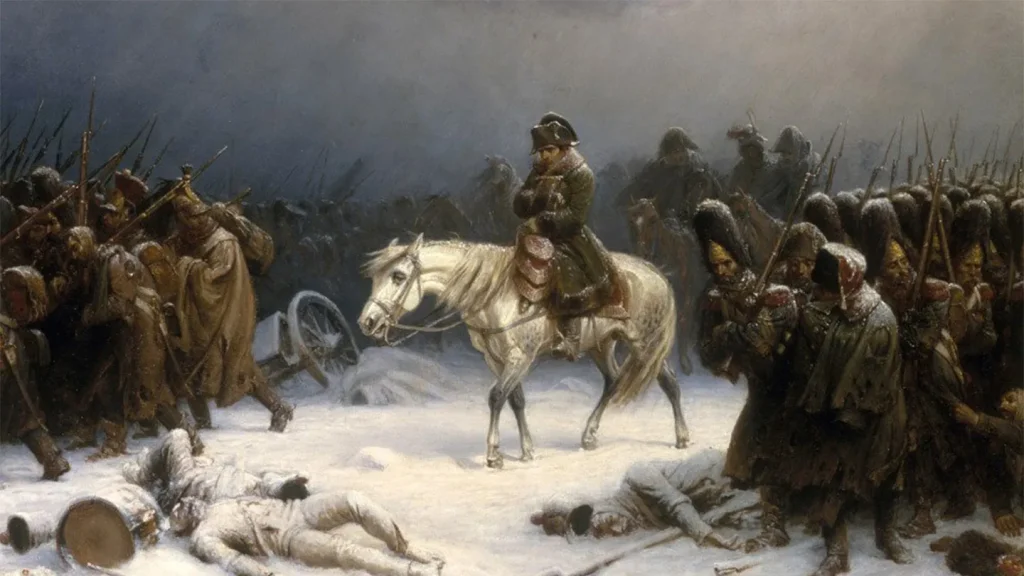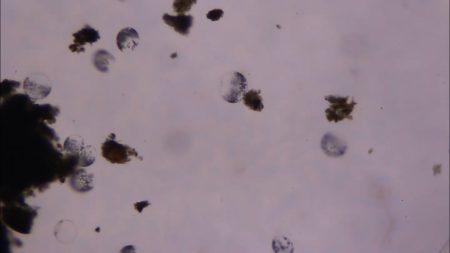Napoleon’s Doomed Russian Campaign: How Infectious Disease May Have Sealed His Army’s Fate
The legendary tale of Napoleon’s disastrous 1812 Russian campaign has long captured historical imagination – how a once-mighty force of over 600,000 soldiers was reduced to mere thousands during their catastrophic retreat from Moscow. While the brutal Russian winter has traditionally shouldered much of the blame for this military catastrophe, recent scientific discoveries have revealed a potentially more insidious enemy that plagued Napoleon’s Grande Armée: infectious disease. Through remarkable advances in DNA analysis, researchers have uncovered compelling evidence that deadly bacteria may have played a crucial role in decimating Napoleon’s forces, reshaping our understanding of this pivotal historical moment.
When a mass grave of Napoleonic soldiers was discovered during construction work in Vilnius, Lithuania in 2001, it offered scientists an unprecedented opportunity to investigate the health conditions of Napoleon’s retreating army. The site contained remains from soldiers who died during the devastating retreat through Lithuania in December 1812, when temperatures plummeted to -30°C. While historical accounts documented the severe cold, starvation, and exhaustion that afflicted the troops, researchers suspected that infectious diseases likely compounded these hardships. By extracting and analyzing DNA from the dental pulp of soldiers’ teeth, scientists identified the presence of two fever-causing bacteria: Bartonella quintana, which causes trench fever, and Salmonella enterica, responsible for typhoid fever. These findings suggest that in addition to freezing temperatures and food shortages, Napoleon’s already weakened troops were simultaneously battling serious bacterial infections that would have caused debilitating fevers, further reducing their chances of survival.
Trench fever, caused by Bartonella quintana, spreads through body lice that thrived in the unhygienic conditions of Napoleon’s army. The disease produces recurring fever, bone pain, and extreme weakness – devastating symptoms for soldiers already enduring a grueling winter retreat. Meanwhile, typhoid fever, caused by Salmonella enterica, spreads through contaminated food and water, resulting in sustained high fevers, severe gastrointestinal distress, and potentially fatal complications. The presence of both pathogens among Napoleon’s troops reveals a perfect storm of infectious disease that would have severely compromised the soldiers’ ability to withstand the cold, march long distances, or fight when necessary. These bacterial infections would have spread rapidly through the closely packed, unwashed ranks, creating a devastating epidemic that rippled through an army already pushed to the breaking point by harsh conditions and dwindling supplies. The scientific evidence brings a human dimension to this historical tragedy, helping us visualize how these soldiers suffered not just from environmental hardships but also from the internal ravages of disease.
This groundbreaking research provides new insights into the complex interplay of factors that contributed to one of history’s most famous military disasters. While historians have long acknowledged that disease affected Napoleon’s campaign, the specific identification of these pathogens adds crucial medical context to our understanding. The presence of these bacteria helps explain the exceptionally high mortality rate among Napoleon’s forces beyond what cold exposure alone might cause. It also demonstrates how pre-antibiotic era armies were extraordinarily vulnerable to infectious disease – a factor that consistently influenced military outcomes throughout history before modern medicine. The research underscores how Napoleon’s strategic miscalculations were compounded by biological forces beyond his control, as his army’s logistical challenges created perfect conditions for disease transmission. By combining traditional historical accounts with modern scientific analysis, researchers have created a more complete picture of this pivotal moment that changed the course of European history.
This scientific detective work exemplifies how modern technology can illuminate historical mysteries and bring forgotten human suffering into sharper focus. The DNA analysis allows us to understand the personal experience of these soldiers in ways previously impossible – men who not only faced enemy bullets and winter frost but also battled invisible microbial enemies that ravaged their bodies from within. It provides a sobering reminder that throughout most of human history, disease has killed far more combatants than actual combat. For Napoleon’s soldiers, the experience would have been truly hellish: marching through snow with inadequate clothing, subsisting on minimal rations, while simultaneously battling fevers that sapped their remaining strength and will to survive. This research transforms how we visualize this famous retreat, helping us appreciate the multiple layers of suffering these men endured as their once-grand military expedition collapsed into one of history’s most deadly military disasters.
The discovery of these disease-causing bacteria in Napoleon’s fallen soldiers serves as a poignant reminder of how biological factors have shaped human history alongside the more visible forces of politics, economics, and military strategy. It demonstrates how even the mightiest armies and most brilliant commanders remain vulnerable to microscopic threats. The scientific findings also create a bridge between past and present, reminding us that while medical advances have conquered many infectious diseases, the fundamental relationship between human health and historical outcomes remains significant. As we reflect on Napoleon’s catastrophic Russian campaign with this new understanding, we gain not just scientific knowledge but also deeper compassion for the individual human suffering that unfolded during this epic military disaster. These soldiers’ remains, preserved for over two centuries in Lithuanian soil, have finally shared part of their story, giving voice to the biological realities that helped defeat an emperor’s ambitions and forever changed the course of European history.















